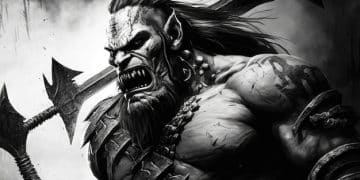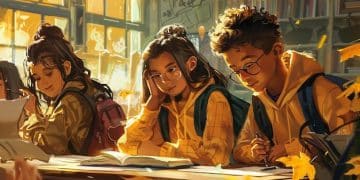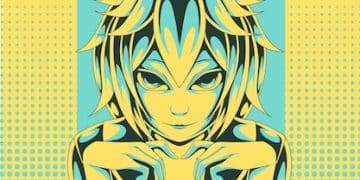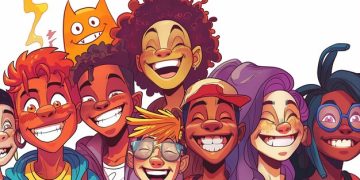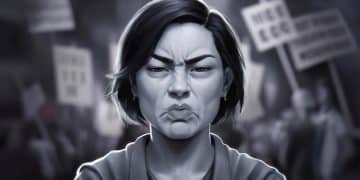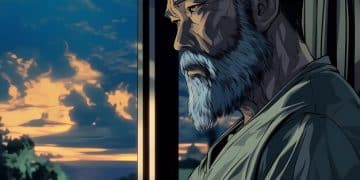The Dark Side of Shonen: Trauma, Loss, and Hope in Popular Series
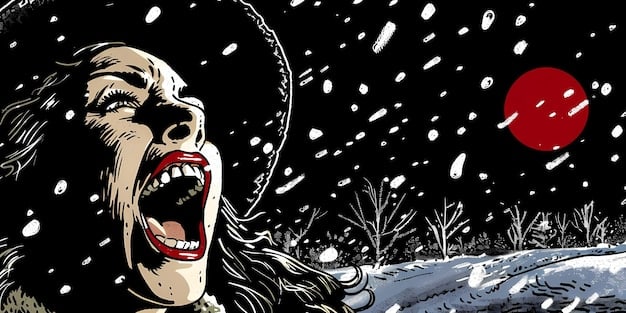
The Dark Side of Shonen: Exploring Themes of Trauma and Loss in Popular Series reveals how popular shonen manga often delves into mature themes like trauma, loss, and moral ambiguity, offering deeper narratives beyond traditional action and adventure.
Shonen manga, known for its action-packed adventures and optimistic heroes, often masks a darker undercurrent. What if these tales of courage and friendship also grapple with profound themes of trauma and loss? Let’s explore The Dark Side of Shonen: Exploring Themes of Trauma and Loss in Popular Series, revealing the emotional depth beneath the surface.
Unveiling Trauma in Shonen: More Than Just Battles
Shonen manga, at first glance, may appear to be all about thrilling battles and the triumph of good over evil. However, many series subtly weave in complex themes, including trauma, loss, and their lasting impact on characters. This exploration adds depth and emotional resonance to the narratives, making the characters more relatable and the stories more compelling.
Defining Trauma in Shonen Context
Trauma, in the context of shonen manga, often stems from catastrophic events such as the loss of loved ones, witnessing widespread destruction, or experiencing betrayal. These events can leave lasting scars on characters, shaping their motivations, relationships, and overall development.
The Role of Loss in Character Development
Loss isn’t merely a plot device; it’s a catalyst for profound growth. Characters who experience loss often embark on journeys of self-discovery, learning to cope with grief, seeking revenge, or striving to prevent similar tragedies from occurring in the future.
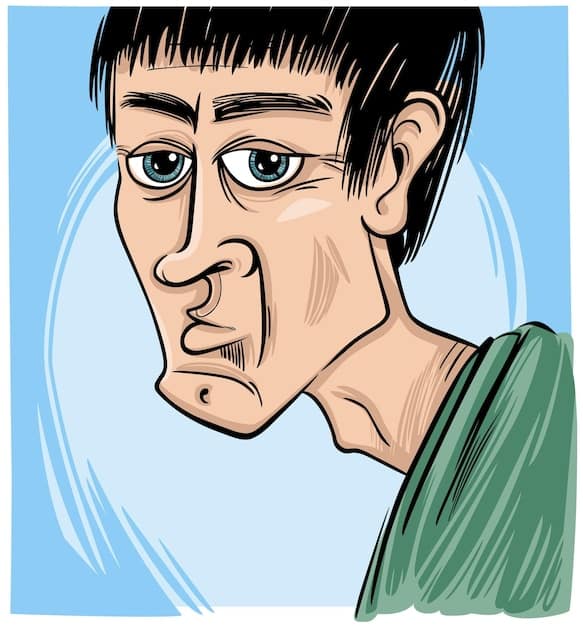
- Resilience: Many shonen protagonists demonstrate remarkable resilience in the face of adversity, inspiring readers with their ability to persevere despite immense suffering.
- Coping Mechanisms: Characters develop various coping mechanisms to deal with trauma, ranging from seeking solace in friendships to dedicating themselves to a cause that gives their life meaning.
- Moral Ambiguity: Trauma can blur the lines between good and evil, leading characters down morally ambiguous paths as they grapple with their pain and seek justice or revenge.
- Catharsis: Shonen manga can offer a cathartic experience for readers who have experienced trauma themselves, providing a space to explore difficult emotions and find hope for healing.
In conclusion, the presence of trauma and loss in shonen manga enriches the narratives, adding layers of complexity and emotional depth that resonate with readers. These themes allow for a more nuanced exploration of the human condition within the framework of action and adventure.
The Scars of War: Trauma in Attack on Titan
Attack on Titan stands out as a prime example where the consequences of war and the omnipresence of death weigh heavily on its characters. It presents a world where survival is a daily battle, and the psychological scars of trauma run deep.
Eren Yeager’s Traumatic Transformation
Eren Yeager’s journey is marked by witnessing his mother’s gruesome death and the constant threat of the Titans. This trauma fuels his desire for revenge and shapes his actions, leading him down a path of increasing moral complexity.
Mikasa Ackerman’s Unyielding Loyalty
Mikasa Ackerman’s early experiences with loss and violence forge an unbreakable bond with Eren. Her unwavering loyalty and protective instincts are rooted in the trauma she endured as a child, defining her role in the story.

- PTSD Representation: Attack on Titan realistically portrays the symptoms of post-traumatic stress disorder (PTSD) in its characters, showcasing the long-term effects of trauma on their mental and emotional well-being.
- Moral Grayness: The series explores the moral grayness of war, demonstrating how trauma can lead individuals to make difficult choices with far-reaching consequences.
- The Cycle of Violence: Attack on Titan highlights the cyclical nature of violence, showing how trauma can perpetuate further conflict and suffering.
Ultimately, Attack on Titan uses trauma as a central theme to explore the devastating impacts of war and the enduring strength of the human spirit. The series does not shy away from depicting the harsh realities of its world, making it a powerful and thought-provoking narrative.
Demon Slayer: Overcoming Loss to Protect Others
Demon Slayer tells the story of Tanjiro Kamado, who experiences profound loss when his family is slaughtered by demons, and his sister Nezuko is transformed into one. This crushing blow sets him on a path to become a demon slayer, seeking both revenge and a cure for his sister.
Tanjiro’s Compassion in the Face of Darkness
Tanjiro’s ability to maintain his compassion and empathy despite the darkness he encounters is a testament to his resilience. His unwavering determination to protect Nezuko and other innocent people is fueled by his desire to prevent others from experiencing the same loss he did.
Nezuko’s Struggle with Demonic Instincts
Nezuko’s transformation into a demon forces her to constantly battle her primal instincts. Her struggle represents the internal conflict trauma survivors often face as they try to reconcile their past experiences with their present selves.
Demon Slayer illustrates how overcoming personal trauma can empower individuals to protect others and fight for a better future. The series explores themes of family, sacrifice, and the importance of maintaining hope in the face of despair.
Tokyo Ghoul: Identity, Trauma, and Transformation
Tokyo Ghoul delves into the psychological impact of trauma through its protagonist, Ken Kaneki. After a life-altering encounter, Kaneki becomes a half-ghoul, forcing him to navigate a world where he no longer fully belongs to either human or ghoul society. This transformation is both physical and deeply psychological.
Kaneki’s Internal Conflict and Identity Crisis
Kaneki’s struggle with his newfound identity as a ghoul leads to significant internal conflict. He grapples with the need to consume human flesh to survive, which clashes with his moral values and his desire to remain human. This conflict forces him to confront the darker aspects of his own nature.
The Cycle of Violence and Despair
Tokyo Ghoul explores the cyclical nature of violence and the despair that permeates both the human and ghoul worlds. Trauma is a recurring theme, with many characters bearing the emotional scars of past experiences. The series reflects on how these scars can shape individuals’ actions and perpetuate further violence.
Tokyo Ghoul offers a compelling exploration of identity, trauma, and the struggle for survival in a world rife with violence and despair. Kaneki’s journey highlights the lasting impact of trauma and the challenges of finding one’s place in a world that seems determined to tear him apart.
Naruto: The Weight of Isolation and Loss
Naruto, while often celebrated for its themes of friendship and perseverance, also addresses the profound impact of isolation and loss. Naruto Uzumaki’s early life is marked by the absence of his parents and the ostracization he faces from the villagers, who fear the Nine-Tailed Fox sealed within him.
Naruto’s Journey from Isolation to Acceptance
Naruto’s journey is characterized by his struggle to overcome the isolation and loneliness he experiences as a child. His determination to gain the acceptance and recognition of his peers fuels his ambition to become Hokage, the leader of his village. Through perseverance and unwavering faith in his own abilities, he builds meaningful connections with others.
Sasuke’s Path of Revenge and Redemption
Sasuke Uchiha’s story is rooted in the trauma of witnessing his family’s massacre. Driven by a desire for revenge against his brother Itachi, Sasuke becomes consumed by darkness, ultimately leading him down a path of moral ambiguity. His character arc explores the destructive nature of hatred and the possibility of redemption through confronting and overcoming past traumas.
Naruto uses the themes of isolation, loss, and trauma to illustrate the enduring power of hope, friendship, and the importance of finding one’s place in the world. The series demonstrates how overcoming personal demons can lead to profound growth and the ability to forge meaningful connections with others.
Bleach: The Burden of Responsibility and Inner Turmoil
Bleach, known for its intense battles between Soul Reapers and Hollows, also delves into the psychological burdens carried by its characters. Ichigo Kurosaki’s role as a substitute Soul Reaper thrusts him into a world of constant danger and forces him to confront his inner demons.
Ichigo’s Struggle with Power and Protection
Ichigo’s newfound powers come with a heavy responsibility: protecting his friends and family from the threats of Hollows. He frequently struggles with the burden of this responsibility, grappling with the fear of failing those he cares about and the need to constantly push his limits.
Rukia’s Past and Redemption Arc
Rukia Kuchiki carries the weight of a tragic past, marked by loss and sacrifice. Her story explores themes of guilt, redemption, and the importance of finding purpose in life. Her connection with Ichigo helps her confront her past and forge a new path forward.
- Inner Hollow: Ichigo’s inner Hollow represents his inner turmoil and the constant battle he faces to control his powers. This internal conflict mirrors the struggles trauma survivors often experience when grappling with their past experiences.
- Sacrifice & Loss: The series underscores the sacrifices characters frequently make, highlighting the losses they endure while battling hollows and safeguarding both realms,.
- Redemption: redemption becomes a central theme as characters grapple with past mistakes and seek reconciliation. This path to atonement underscores the value and possibility of evolving beyond past traumas.
Bleach showcases how the burdens of responsibility and inner turmoil can shape individuals and their relationships with the world around them. Through themes of sacrifice, redemption, and the constant battle against darkness, the series explores the psychological depth of its characters.
Looking Ahead: The Future of Shonen and Trauma
As shonen manga continues to evolve, the exploration of trauma and loss promises to become even more nuanced and sophisticated. Creators increasingly recognize the importance of addressing these complex themes in a way that resonates with readers and promotes empathy, understanding, and healing.
The Rise of Nuanced Representation
Future shonen series are likely to feature more nuanced representations of trauma, moving beyond superficial depictions and delving deeper into the psychological and emotional impacts on characters. This approach will allow for more relatable and impactful narratives.
The Potential for Healing and Hope
Shonen manga has the power to offer messages of hope and healing to readers who have experienced trauma themselves. By exploring themes of resilience, friendship, and the importance of seeking help, these series can provide a sense of validation and empowerment.
In conclusion, the future of shonen manga looks bright, with the potential for even more meaningful and impactful explorations of trauma and loss. By embracing these complex themes, creators can create stories that not only entertain but also inspire and heal.
| Key Point | Brief Description |
|---|---|
| 😔 Trauma in Shonen | Explores how trauma adds depth to characters and narratives. |
| ⚔️ Attack on Titan | Illustrates war’s psychological impact, showing PTSD and moral ambiguity. |
| ✨ Demon Slayer | Highlights overcoming loss to protect others and maintain hope. |
| 👤 Tokyo Ghoul | Delves into identity struggles and surviving violence and despair. |
Trauma in Shonen Manga?
▼
Dark themes add complexity and emotional depth, resonating with readers and offering relatable narratives, moving beyond simple action.
▼
"Attack on Titan" realistically portrays PTSD and moral grayness caused by constant warfare, highlighting the cyclical nature of violence.
▼
Loss motivates Tanjiro to become a demon slayer, emphasizing family, sacrifice, and hope amidst despair, driving his protective instincts.
▼
Kaneki’s transformation forces an identity crisis, struggling with violence and morality, symbolizing inner turmoil and survival challenges.
▼
More nuanced representations of trauma for empathy, healing messages, and resilience, moving beyond superficial depictions.
Conclusion
Examining the dark side of shonen manga reveals how these stories use trauma and loss to create richer, more engaging narratives. Series like Attack on Titan, Demon Slayer, Tokyo Ghoul, Naruto and Bleach demonstrate the power of exploring complex emotions, offering both entertainment and a deeper understanding of the human experience. These themes not only add complexity but also provide space for character growth, resilience, and messages of hope.
